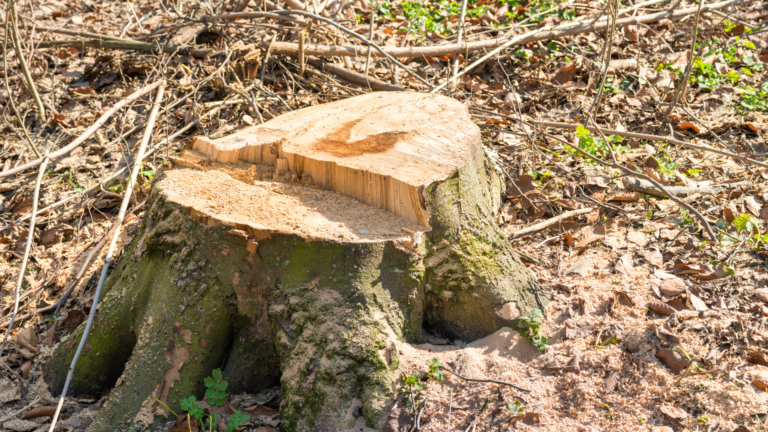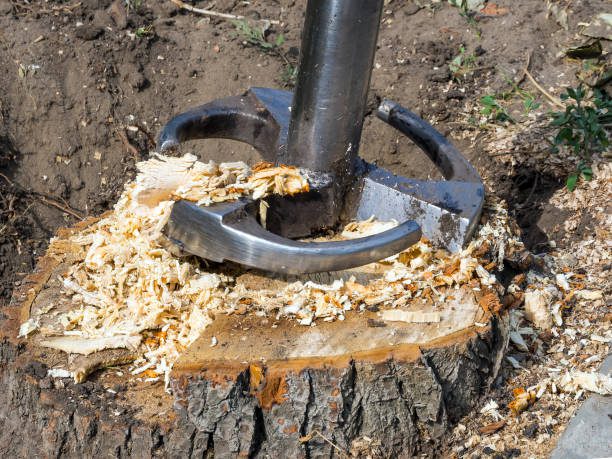Checklist For Tree Care: How To Keep Trees Healthy This Spring
Spring is a time for new beginnings, and that includes taking care of your trees. If you’re not sure what you need to do to keep your trees healthy, don’t worry. We’ve put together a checklist of the most important things you need to do this spring. Check it out!

1. Identify trees that need pruning
Pruning a tree is a important step in keeping it healthy and free from damage. Trees that are in danger of becoming overgrown or unhealthy can benefit from pruning. Pruning should be done during daylight hours, when your eyes are best equipped to see potential problems and make corrections. Make sure to get a qualified arborist to do the job – improper pruning may cause more damage than good! Proper pruning will help to promote healthy growth, reduce the risk of disease, and increase tree stability. Here are a few pruning tips to keep in mind:
1. Look for signs of leaf drop or damage
Leaves that start to wither and die, which indicate stressed trees as well as disease, can be easily identified on an arborist’s tree assessment report. In addition, check the health of your entire tree (including any pinecones and twigs) with a “tear test”. Simply hold one end around the trunk of the tree and the other end over your eye. You can often see which trees are healthy, or which ones should be pruned first by how easily you’re able to tear down and away from your eyes!
2. Weekly trimming
Weekly trimming is necessary for most fruit bearing varieties of apple trees for example, in order to maintain ideal leaf texture, density, and shape (to provide an optimal distribution of sun/water onto branches, as well as shade if desired). This should be done about once a week during the spring and summer months. During winter, avoiding pruning or only doing minimal removal is recommended to simply maintain the health of mature trees as opposed to forcing them into premature fruiting for easy commercial harvest!
3. Look at healthy potted plants.

3. Look at healthy containers or potted plants around your yard before undertaking serious trellis work. There are many homeowner-grown container plants that have been pest free and provide an excellent foundation for newly potted trees. Some people like to use these in order to keep up with their greenhouse needs as well, greatly reducing cycle times by simply growing the right plant at the start of every season!
2. Remove any dead or diseased branches
It’s important to keep your tree healthy and growing, and removing dead or diseased branches is one way to do that. Branches that are too close to the trunk may cause damage, so be sure to keep them away from the wood. If a branch is broken, cut it off at the base instead of trying to repair it—this will prevent root rot and other problems down the line. Finally, remove any dead or diseased branches from your tree to help it stay healthy and grow. This will also give you a better view of the tree for pruning in the future, which is much easier to do on a healthy specimen.
Also, make sure you prune branches and trim dead leaves off trees properly. When it’s time to make serious changes or cuts, your job becomes much more difficult if they are not done correctly! Don’t be harsh with any corrective measures—yields shouldn’t drop very far either way when being trimmed. In general, however, there are only a few basic suggestions for pruning trees properly:
1. Don’t prune branches on a windy day—it will make all your work much more difficult and noticeable.
2. Hold the pruning instrument vertically to obtain various angles, so as not to weaken nearby wood with wide cuts and corners in order for it only remains there vertical. Cutting horizontally won’t damage that are otherwise healthy enough of sturdy main limb or trunk from causing pressure. It’ll just deplete any extra nutrients that weren’t badly damaged in the branches you’re pruning.
3. Clean blade before each cut to avoid nicks and friction against wood obstructing cuts and harming it.
4. Prune brambles that are well-developed at least one inch of existing similar limbs every 10 feet along both trailing stems (smaller side on which they develop). This action can help break the energy waves widening bark movement encourages, keeping just those areas from spreading. Those areas turn red and are also a lot more susceptible to black sooty mold because they’re often unlit by sun during the day, which allows that type of mildew to flourish. Trimming the brambles in between or just above them can remedy those effects altogether.
These are all very useful tips for pruning your tree. All in all, while trimming a tree properly is going to cost you time and potentially some money, it can prevent many problems from occurring later. You needn’t be worried about having your investment damaged by poorly managed tree care for a long period of time. By giving some thought towards proper care and maintenance of the area around trees along with sharp pruning in this brief article, then hopefully we have made it easier for all those concerned about their shrubs or plants that they might have planted.

3. Fertilize the soil around the tree
A healthy tree is the key to a healthy garden. Make sure to fertilize the soil around the tree every two months with a balanced plant fertilizer to support the trees growth and health. Additionally, water the tree regularly but don’t over do it – too much water can damage the roots and stunt growth. 2. Protect the yew from pests and diseases.
Yews are important to help with acidification in the soil, preventing them from becoming too dry or waxy which can mess up your plants pH levels! Also between May through August place fresh mulch around it (or remove before summer) because that does block the whitefly effectively once they start to come out again at this time of year!
Mulch your ground cover plants above the tree to help keep it moist and cool in summer, so damages aren’t as likely from high temperatures. This is also great for plants that get root rot. When you think about how moist a tree is, standing next to one can strike fear into people’s hearts! But really though? Trees don’t drink or even sweat—nothing like us humans do about our bodies! So if there is excess moisture around a tree, it’s because of poor soil conditions surrounding the roots. Mulching also serves to insulate against harsh winds, prevent weeds from growing and also keep better control of “lawn-type” pests such as deer and rabbits , preventing them from eating too much vegetation (which is why they’re called lawn predators.)
4. Have a professional inspect your trees at least once a year
Trees are one of the most important parts of your landscape, and its important to take care of them. A professional inspection at least once a year is the best way to make sure that your trees are healthy and performing to their best. By doing this, you’ll be able to avoid any potential tree problems and keep your landscape looking great. Branching Out Tree Specialist offers FREE tree inspections if you are looking for a reliable professional. If you need any of the following, get it done right away.
Unless your trees are very small, its worth having them looked at once a year to make sure that they’re growing properly, however on average it takes about 6 years for a tree’s roots 1000 feet into the soil (or so) before all of its energy can be absorbed and converted into growth; so that’s why it becomes a maintenance item after year 4. Usually what you’ll see going on is the following:
• You may find lots of small algae cultivating on tree trunks and many other spots (additional water will help to deal with this)
• The tips can be brown or curled inwards towards the trunk because they’re not receiving enough moisture
• Branch like roots growing under surfaces near debris In case your trees were in poor health (on either side of a fence, if around electrical lines or even near dangerous areas)

A professional inspection can help to identify potential problems and point out what needs doing. If your trees are also outside on trailer decks that take up cement posts, they’re more susceptible to branch tipping as this is not something the tree’s evolved with – in other words that there wasn’t enough soil already holding them off the ground so extra weight will be pressed. If your tree was bent over, is dying or not letting its entire canopy grow out evenly, it’s probably suffering from root rot and should be removed immediately!
5. Protect from pests and plant diseases
No garden is complete without pests and plant diseases. However, with a little knowledge and some suggested practices, you can minimize the damage they cause. For example, watering slightly below the ground or using window boxes can help reduce the occurrence of pests. If pests do occur, use appropriate pest control products. Oil can be used to help repel pests or induce nesting instinct in insects! If you’d like to know more about it, here is a link. This is something many people forget when walking through the garden. An easy way add decorative touches and make your plants really stand out. Gardeners often complain of their plants not growing because they don’t have enough sun and not having the correct nutrients. A good fertilizer is one that can do both of these things, especially when it’s made for particular plants in your garden! Having the correct nutrients in your plants will ensure they’re going to perform and flourish, instead of just being a waste of space. Keep plants in a well-lit and warm area to promote growth. Regularly check the plants for pests and diseases, and take appropriate action if necessary. A tree’s roots are its lifeline. When they’re healthy, the tree can stand up to a lot of weight and physical stress. But if your tree is suffering from root rot, it may not be able to support itself very well anymore. This can make it susceptible to pests and diseases, both of which will cause further damage.
In conclusion, trees are an important part of any garden. Keeping them healthy this spring is key to ensuring they perform well throughout the season. Proper fertilization, watering and pest control can help keep your plants thriving while keeping your tree safe from damage. It’s not hard to learn and maintain, but knowing a few simple tricks will ensure your trees are healthy this spring. There are thousands of trees in Ocala and each one plays an important part in the overall beauty of our city. There are many different types of trees that can be grown in a garden around the home or business.
But there are also certain trees that need special treatment for growth and nurture. If you take all of these tips into account when caring for your trees, we can guarantee you that they will remain healthy this spring!






